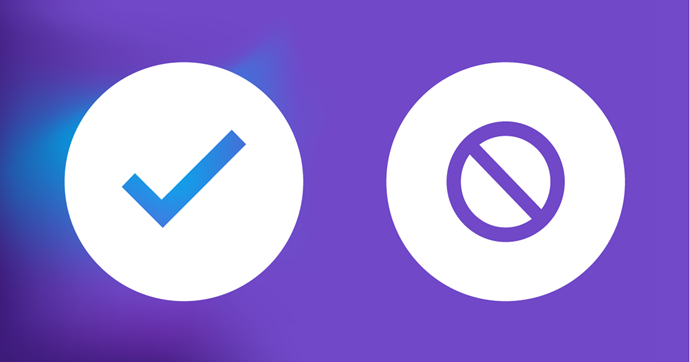The popularity of video interviews has increased significantly in recent years, and talent acquisition leaders and hiring managers across industries are using it now more than ever amid public health concerns around the COVID-19 pandemic. Virtual technology allows TA functions to continue evaluating candidates while also removing in-person interaction.
Even if your organization has instituted hiring freezes, it’s important to have a plan to implement video interviewing. It can equip your TA function with flexibility, cost savings and time savings when responding to sudden, massive changes – like we’re seeing with COVID-19. It also can help you continue to engage great talent no matter what impacts your business in the future.
Here is a compilation of video interviewing tips and resources to help inform your approach. Ensuring that your TA team, hiring managers and candidates are prepared can help you respond to the new normal for interviewing, assessing and hiring. It also can lead to positive outcomes for both your business and public health.
Planning for and Supporting Video Interviewing
The first key to a successful video interviewing approach is communication. Make sure that both hiring managers and candidates have the information they need for a positive experience. We recommend sending out an email to both parties – at least 24 hours in advance of the interview – with the following info:
- Explanation of why the interview will be via video
- Tips on how to conduct a virtual interview
- Easy-to-follow instructions for your video interview platform, including screenshots showing the basic steps in the process
- Clear instructions for what they need to set up or test before the interview
- Links to any resources that might help them troubleshoot tech issues
Hiring managers also need to understand the expectations around making hiring decisions following a video interview. While most hiring managers prefer in-person interviews, they’ll need your help to recognize the importance of evaluating candidates virtually. Equip them with existing interview guides and behavioral-based questions to aid them in making hiring decisions. When the economy recovers from the current challenges, virtual-ready organizations and TA teams will outperform those that are slow to adapt this approach.
Finally, when planning your video interviewing approach, consider different platforms and which features or capabilities are most important to you. While there are a variety of dedicated technology solutions supporting video interviewing, don’t brush off your enterprise’s chosen video conferencing platform, like Microsoft Teams/Skype, Google Hangouts, and Zoom. This is especially the case if you’re considering live interviews for a predominantly professional audience, one that is likely accustomed to video engagement. You also can use these platforms for the short-term while you work on establishing your permanent long-term video interview approach.
If your organization is ready to consider a dedicated solution, choose one that will best match your needs and support great experiences for hiring managers and candidates. The best solutions remove as many potential barriers for hiring managers and candidates as possible. These solutions also are mobile-friendly, ensuring candidates won’t be eliminated based on the tech they might or might not own.
Try multiple options before selecting your tech. Many solutions can integrate with your ATS to help you get the most out of the platform.
On-Demand Interviewing
Under normal circumstances, most companies require a “face-to-face” interview with the hiring manager to ultimately make the hiring decision. On-demand video interviewing can speed up the process. It allows candidates to complete an interview at their own convenience, and it removes the challenge of scheduling an initial screen with the recruiter. For roles where your target candidate may have unique hours, such as nurses, delivery drivers or retail workers, on-demand video interviewing can provide additional flexibility for candidates, as well as your TA team and hiring managers. Reviewing these recordings/videos can be done by a member of your team during “off hours,” allowing decisions to be made faster to move the candidate on to a hiring manager interview.
Virtual Interview Types Explained
On-Demand – Candidates complete a video interview at their own convenience in a one-way conversation with pre-defined questions. It replaces the initial telephone screen conducted by a recruiter.
Live 1:1 – Direct, interview happens in real-time between a hiring manager and candidate. A video replacement of an in-person interview.
Live Panel – Enables a company to interview candidate in a live panel setting with multiple interviewers simultaneously.
Telephone – Not all roles or circumstances are appropriate to video interviewing. If the candidate or hiring manager population is less accustomed to video engagement or a video interview simply becomes additive to the process, a phone interview may be a better suited step prior to making a hiring decision.
General Best Practices for Video Interviews
Recommendations for how to participate in a virtual interview – for both hiring managers and candidates and regardless of the role – include a few nuances to help facilitate natural exchanges and a friction-less experience:
- Present good body language. Don’t let being at home or in a public space lure you into feeling more informal than appropriate.
- Keep your hands in your lap to make sure you don’t make any distracting gestures.
- Silence your devices to avoid any possible distractions like your smartphone or notifications on your computer.
- Maintain eye contact by looking at the other person’s face on your computer screen, not your own.
- Smile and engage to show your energy around the discussion.
- Manage your speaking pace and tone, ensuring appropriate volume and pauses so the other person has time to respond.
- Be yourself. It may be on video rather than in-person but try to give a feel for who you are.
Video Interviewing Tips for Hiring Managers
Hiring managers need to give video interviews the same serious consideration as in-person interviews, which means preparing properly. You can support your hiring managers by sharing with them the following important tips to help them get ready for successful video interviews:
- Know and understand the job description thoroughly – and the non-negotiable skills and traits for the job (especially important for business-critical roles during COVID-19).
- Assess the current team culture and dynamics to envision how the next addition could fill a gap, add diversity or enhance the team.
- Find a quiet, well-lit space from which to conduct the interview.
- Double-check interview time(s), considering possible differing time zones.
- Dress in attire that mirrors your company’s standard dress code.
- Print and have any interview guides or competency frameworks ready.
- Double-check that the recruiter has provided the candidate with the information necessary for a successful interview:
- Confirm that the candidate knows the interview will be virtual
- Provide the candidate with clear instructions for accessing and using the video technology
- Communicate to the candidate why the interview is virtual and give a heads-up about what they can expect from the interview experience
Help hiring managers understand how they should approach the interview itself. When conducting the interview, they should change their approach and expectations from how they would conduct an in-person interview. At the start of the interview, they should acknowledge that a video interview may feel different or a bit awkward. The candidate needs to be assured that they shouldn’t worry about any tech difficulties and that the hiring manager will work with them to solve any hiccups. The hiring manager should provide as much comfort and confidence to the candidate that their interview is important. The hiring manager focus is on the substance of the answers, not on the quality of the candidates’ video interview setup. We’re all learning to adapt to new approaches in these turbulent times.
Throughout the interview, hiring managers should also keep in mind that it can be more difficult to judge how the other party reacts to something said on video vs. in-person. They should be alert and responsive to what the candidate says. On the flip side, they shouldn’t talk too much when explaining something, incorporating pauses every few sentences to gauge the candidate’s response. Artificial breaks in the conversation, which would feel strange and misplaced in-person, can help make sure candidates have a chance to respond to what the hiring manager says.
Video Interview Tips for Candidates
Preparation is, obviously, important for candidates going into an interview. For video interviews, this preparation is largely the same as an in-person, with a few tweaks. Below are a few key tips you can send to candidates preparing for a video interview:
- Know and understand the job description thoroughly.
- Make sure you have instructions from the recruiter for how to access and use the video technology.
- Choose a quiet, well-lit room from which to be interviewed. Tell everybody in your living space when your interview is to avoid potential interruptions.
- Consider your seating location within the room to ensure the background behind you won’t be distracting or too bright on camera.
- Dress the same way you would for an in-person interview.
- Be ready to set yourself apart. Video interviews are a unique opportunity to use supplemental tools like a presentation deck with info on your background, skills and plans for the role.
- Practice logging into the interview platform and testing your log-in credentials and device.
- “Arrive” to the interview early to test out your equipment and internet connection.
- Demonstrate your speaking and listening skills by focusing on your pace and leaving room for the interviewer to respond to what you say.
- Follow the same recommend practice as an in-person interview, send a message afterwards, thanking the interviewer for their time.
Focus on Candidate Experience
When implementing a new solution or approach, it’s easy for the focus to be just on making it happen. But candidate experience needs to be considered for every aspect of video interviewing. Every job – and every candidate – has its own unique traits. Candidates for one role could have a vastly different comfort level with technology and a virtual interview than candidates for another role. Clear and thorough communication with hiring managers and candidates can support positive experiences and ultimately lead to better outcomes from your video interviews.


